

The Art of Floral Arranging for Amateurs
Summary
Reflection Questions
Journal Prompt
The art of floral arranging blends the beauty of nature with human creativity. Historically, this art has deep roots in various cultures worldwide, each presenting its own unique styles and symbolism, reflecting the era and society from which they originated. Today, flower arranging remains relevant, evolving with contemporary trends while still drawing inspiration from traditional practices. For amateurs, delving into this art form is not just about creating aesthetically pleasing displays. It’s an opportunity for personal growth and expression. Engaging in flower arranging offers numerous benefits, including stress relief, enhancement of creativity, and the joy of connecting with nature. This art form stands as a testament to the enduring human desire to bring natural beauty into our lives and to express ourselves through the harmonious blending of color, texture, and form. Read on for our tips and tricks as you begin your flower arranging journey!
Understanding the Basics of Floral Arranging
The choice of flowers is pivotal to the aesthetic and mood of the arrangement. Commonly used flowers include roses, known for their classic beauty and wide color range; lilies, which offer elegance and a dramatic flair; chrysanthemums, popular for their durability and variety; and tulips, which bring a touch of grace and are available in many hues.
Seasonal flowers like daffodils in spring or sunflowers in summer add a timely charm, while exotic flowers like orchids can introduce an element of sophistication. Foliage and filler flowers, such as baby’s breath or ferns, are also integral, providing contrast and complementing the main blooms.
Tools and Materials Needed
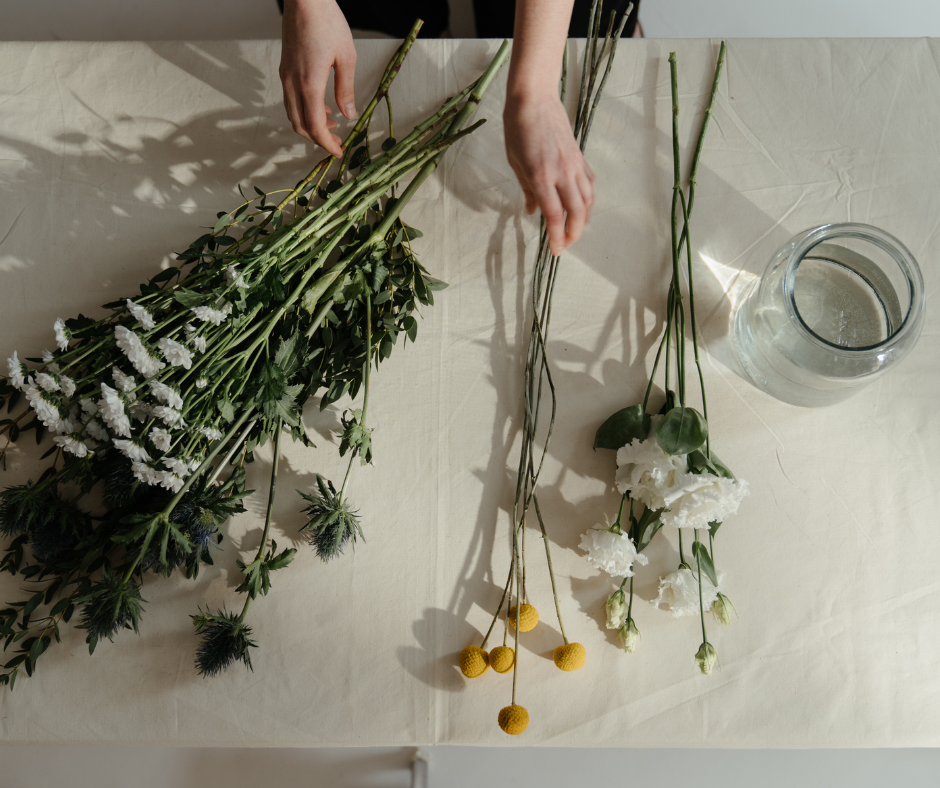

The right tools and materials are essential for effective flower arranging. Basic tools include sharp scissors or floral shears for clean cuts, floral tape and wire for structure and support, and a suitable vase or container to hold the arrangement.
Floral foam or a lattice of tape is often used as a base to stabilize the flowers and maintain their position. Additionally, a water spray bottle for hydration and gloves for handling thorny or delicate plants can be useful. For those looking to explore more creative designs, materials like decorative stones, ribbons, or colored glass can add unique touches to the arrangements.
Basic Principles of Flower Arrangement
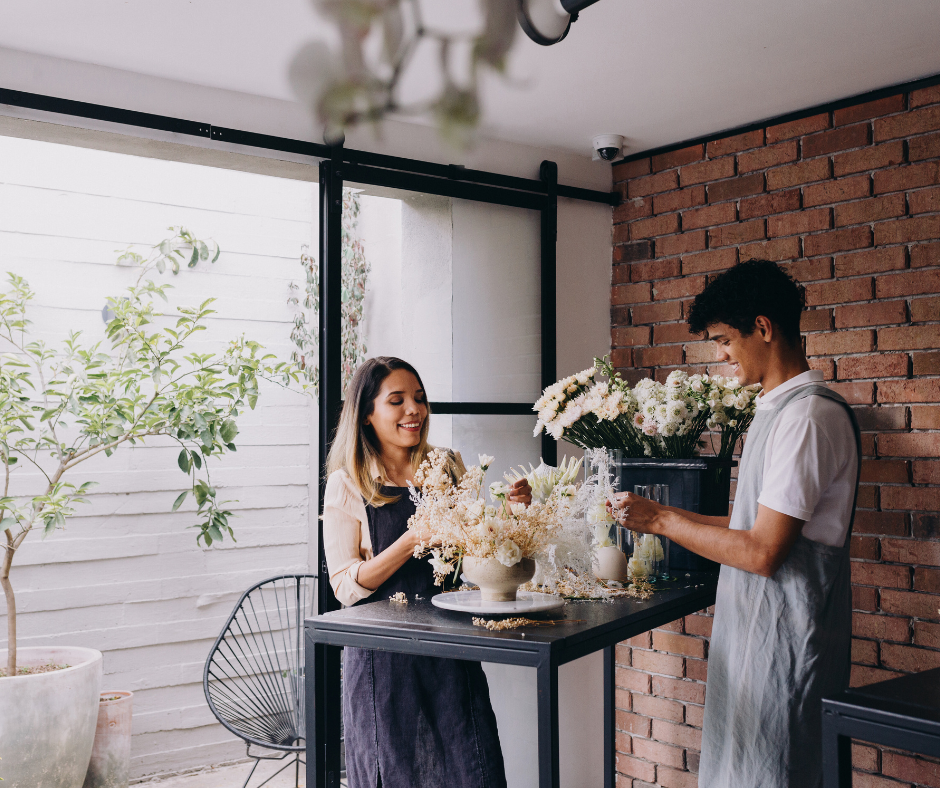

Three fundamental principles underlie the art of flower arranging: balance, harmony, and proportion. Balance involves the visual weight distribution in the arrangement, ensuring that it does not appear too heavy on one side. Harmony is achieved when the flowers, colors, and materials used complement each other, creating a cohesive look.
Proportion refers to the size relationship between the different elements of the arrangement, including the container, and ensures that the scale of the flowers and foliage is appropriate to their setting. Understanding and applying these principles can elevate a simple bouquet into an art form, creating arrangements that are pleasing to the eye and evoke the desired mood or theme.
Traditional Styles and Techniques for Floral Arranging
Traditional styles of flower arranging vary across different cultures and historical periods. Some of the notable traditional styles include Ikebana, Victorian, and Flemish. Let’s take a closer look.
Ikebana (Japanese Flower Arranging)
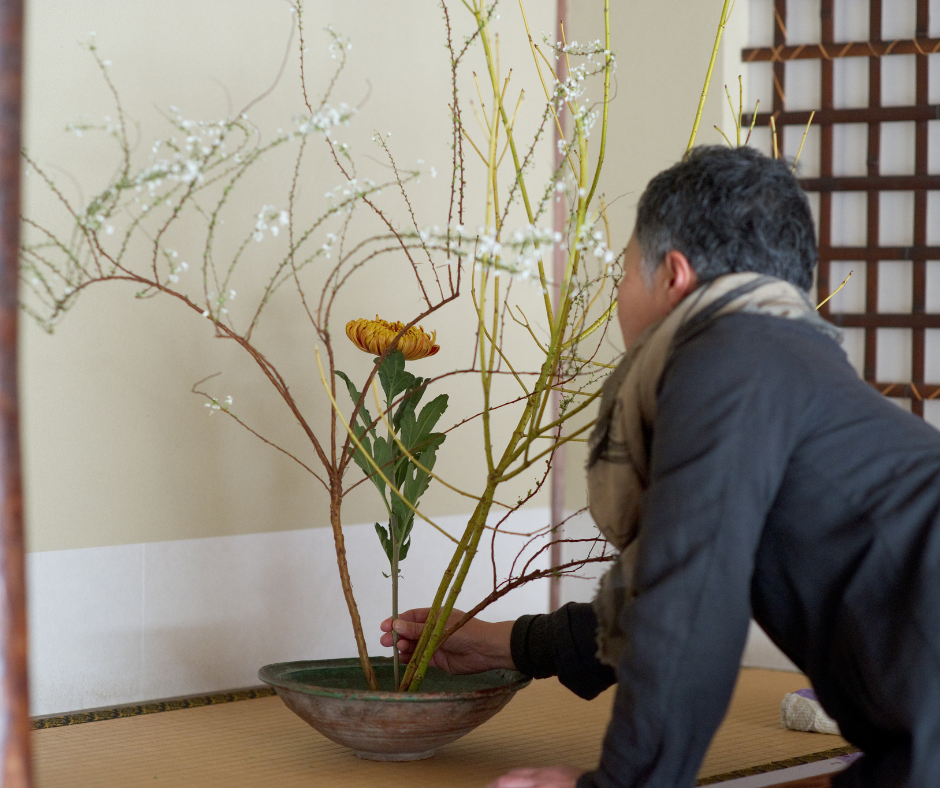

One of the most renowned and disciplined forms of flower arranging, originating in Japan. Ikebana emphasizes minimalism, shape, line, and form. It’s deeply rooted in philosophy and often seen as a meditative practice. There are several schools of Ikebana, each with its own rules and styles.
Western Classical Style
This style evolved in Europe and is characterized by the abundant use of flowers to create a dense and color-rich arrangement. Often symmetrical and full, these arrangements focus on the beauty of the blooms and use a variety of flowers and foliage.
Victorian Style
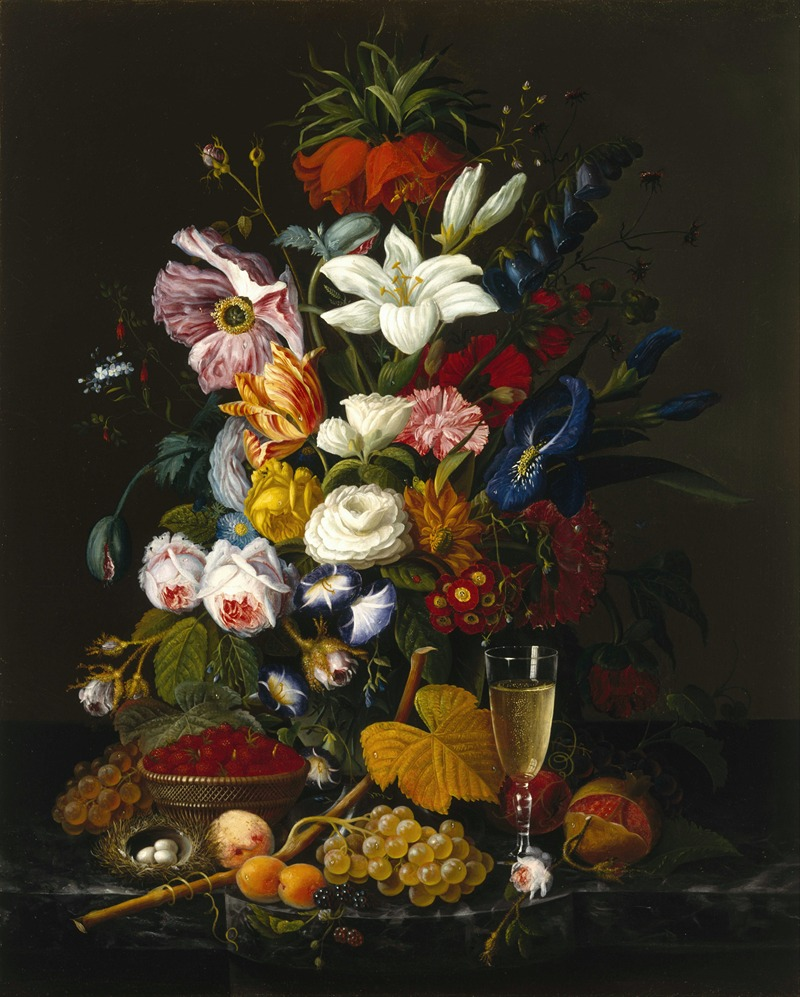

Emerging during the Victorian era in England, this style is known for its ornate and elaborate designs. It often includes a variety of flowers, foliage, and herbs. Each flower and plant used in Victorian arrangements typically holds a symbolic meaning, a practice known as floriography. We delve deeper into floriography and “the language of flowers” in an upcoming article on DesignDash.
Chinese Flower Arranging
Rooted in ancient Chinese philosophy, this style often aims to capture the balance between nature and human life. It’s less structured than Ikebana but still focuses on creating harmony and balance within the arrangement.
Dutch/Flemish Style
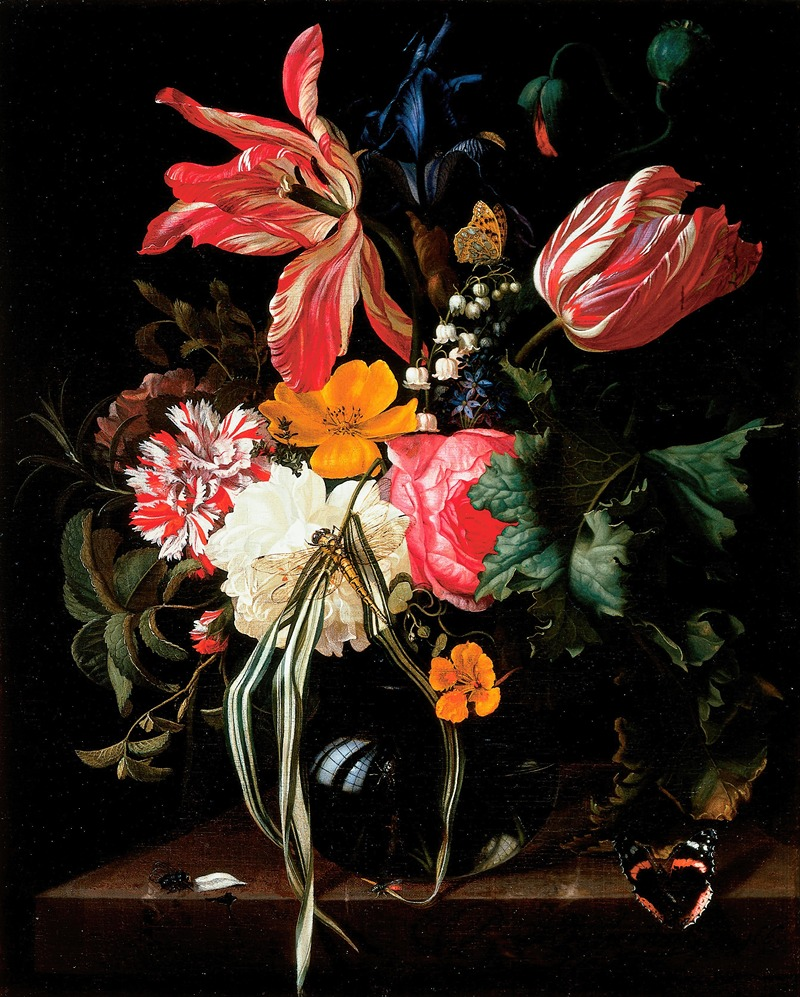

This style became popular in the 17th century, known for its lush and overflowing look. The arrangements often feature a wide variety of flowers, creating a rich tapestry of colors and textures. They were famously depicted in many Dutch and Flemish still-life paintings of that era.
Modern European Style
This style focuses on unique and artistic arrangements, often using flowers and plants as pieces of art. It includes a variety of techniques and designs, blending traditional European styles with contemporary influences.
Contemporary Styles of Floral Arranging
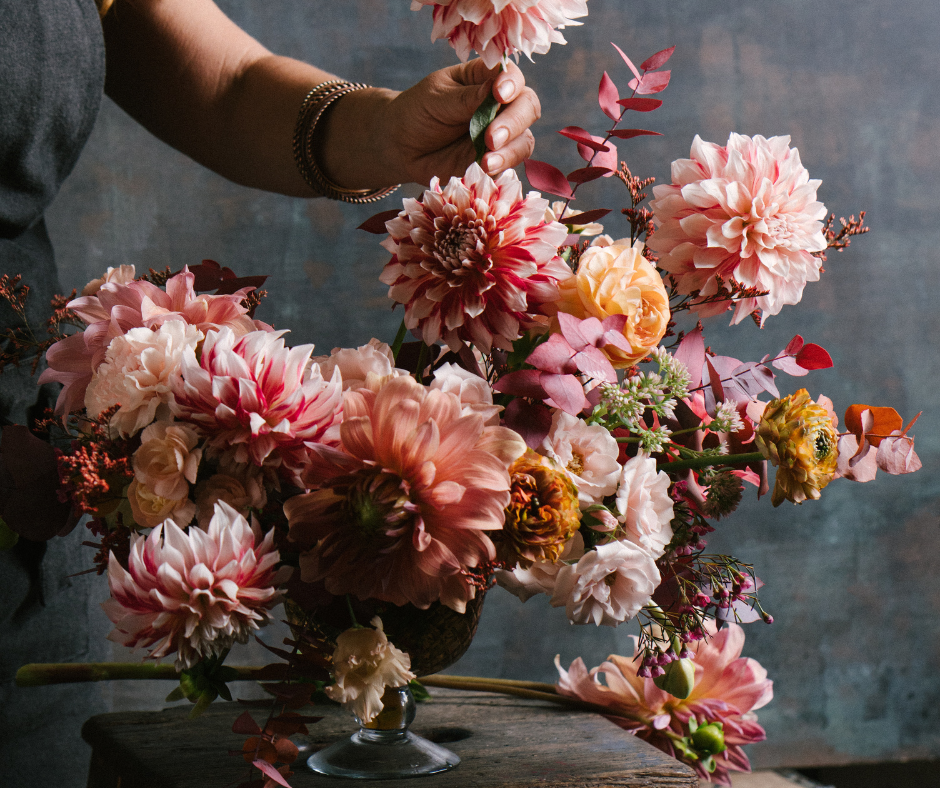

The evolution of flower arranging into modern and contemporary styles has seen a shift towards more relaxed and unconventional designs. These styles often focus on bold, dramatic statements with an emphasis on individual expression. Modern arrangements might feature asymmetry, juxtaposition of different textures, and the use of non-traditional materials like metal or plastic.
The contemporary approach also embraces minimalism, where the arrangement is not about the abundance of flowers but the impact of each stem, often highlighting the beauty of simplicity. In these styles, there’s a noticeable trend towards sustainable practices, such as using locally-sourced and seasonal flowers.
The use of color also plays a significant role, with contemporary arrangements often featuring monochromatic schemes or bold, contrasting hues, challenging traditional color palettes and combinations.
Techniques for Different Arrangements
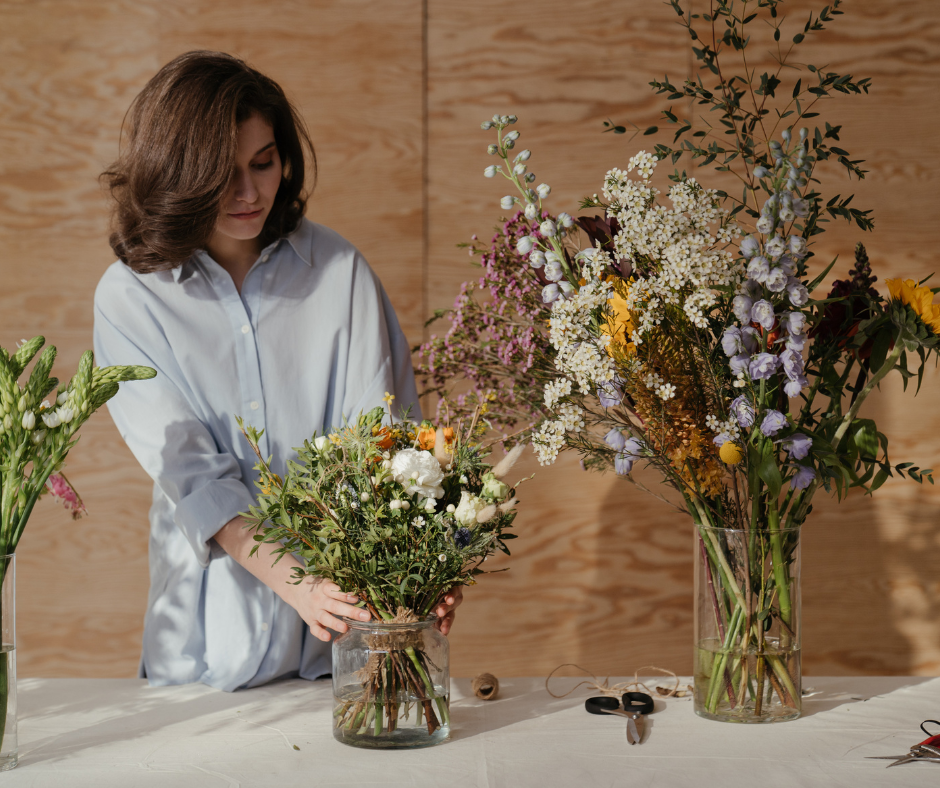

Different types of flower arrangements, such as bouquets, centerpieces, and wreaths, require specific techniques to achieve the desired effect. For bouquets, a spiral technique is commonly used, where stems are arranged in a spiral pattern for a balanced and round appearance, ideal for handheld bouquets.
Centerpieces, meant to be viewed from all angles, require a more multidimensional approach. Techniques here often involve creating a structural base with foliage before adding focal flowers, ensuring uniform distribution and balance.
For special forms like wreaths or vertical arrangements, anchoring techniques using floral foam or wire structures are essential for stability and shape maintenance. Layering is another key technique, where flowers are arranged in layers to create depth and volume, giving the arrangement a lush and full appearance.
Mastery of these techniques allows for the creation of arrangements that suit various purposes and settings, from intimate home decorations to large-scale event floral displays.
Tips for Selecting and Preparing Flowers for Your Arrangement
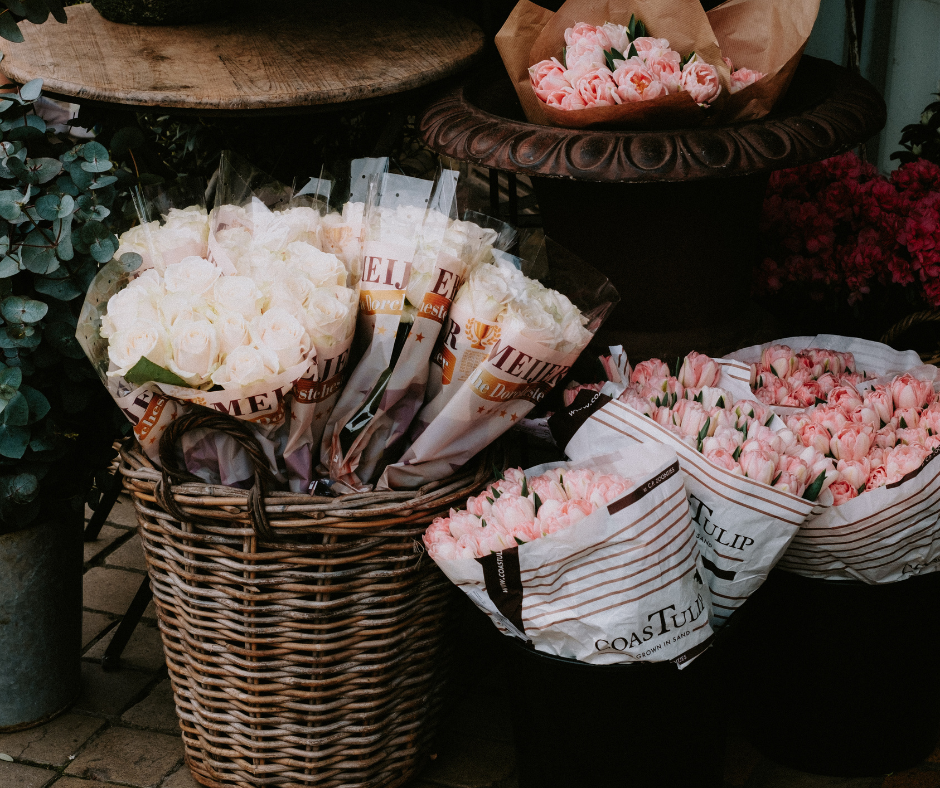

Selecting the right flowers is a critical first step in flower arranging. Key considerations include seasonality, color, and texture. Seasonal flowers are not only more accessible and affordable but also ensure the arrangement is in harmony with the time of year. The color palette chosen can set the mood of the arrangement, from soft pastels for a gentle, calming effect to vibrant hues for a more energetic and striking impact.
Fuel your creative fire & be a part of a supportive community that values how you love to live.
subscribe to our newsletter
Texture also plays a vital role. Combining flowers with different textures, like the smoothness of rose petals against the spiky drama of sea holly, can add depth and interest to the arrangement. It’s important to consider the longevity and resilience of chosen flowers, especially if the arrangement is for a specific event or needs to last for a certain period.
Prepping and Caring for Flowers
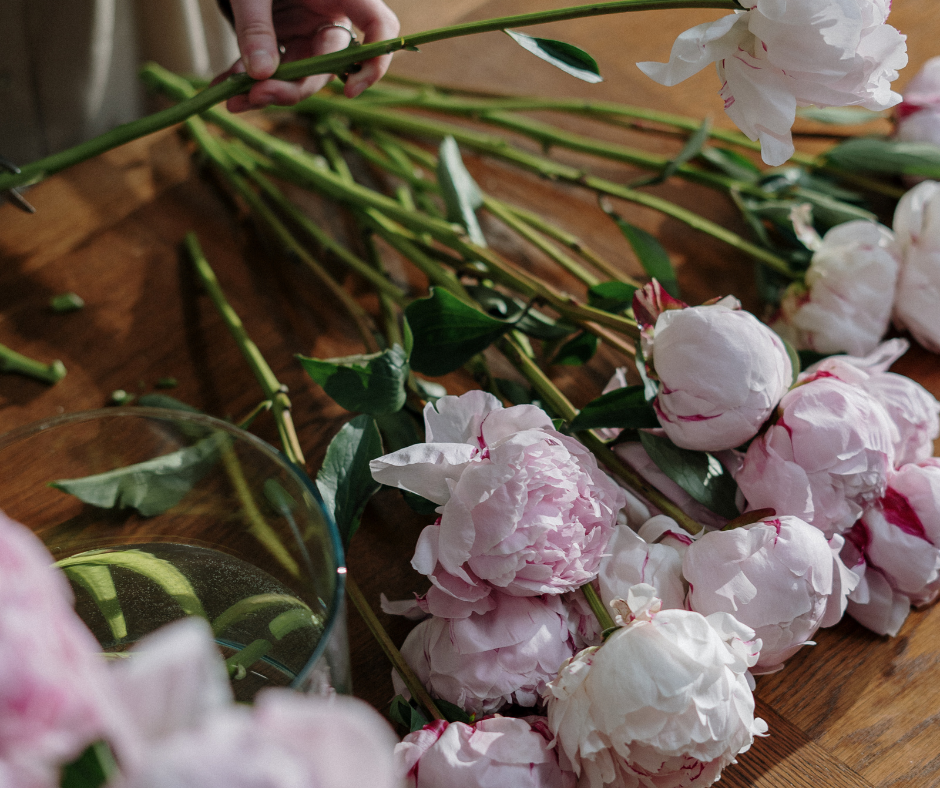

Proper preparation and care of flowers are essential to extend their freshness and vitality. This process starts with cutting the stems at an angle, which increases the surface area for water absorption. Using clean, sharp scissors or shears is important to avoid crushing the stems.
Immediately placing the cut flowers in water helps prevent air bubbles from blocking the stem’s water uptake. The water should be clean and ideally at room temperature; changing it every couple of days can increase the flowers’ lifespan.
Removing leaves that fall below the waterline helps reduce bacterial growth. For some flowers, specific care is needed, like snipping the ends of woody stems or splitting them for better water absorption.
The Key to Long-lasting Arrangements
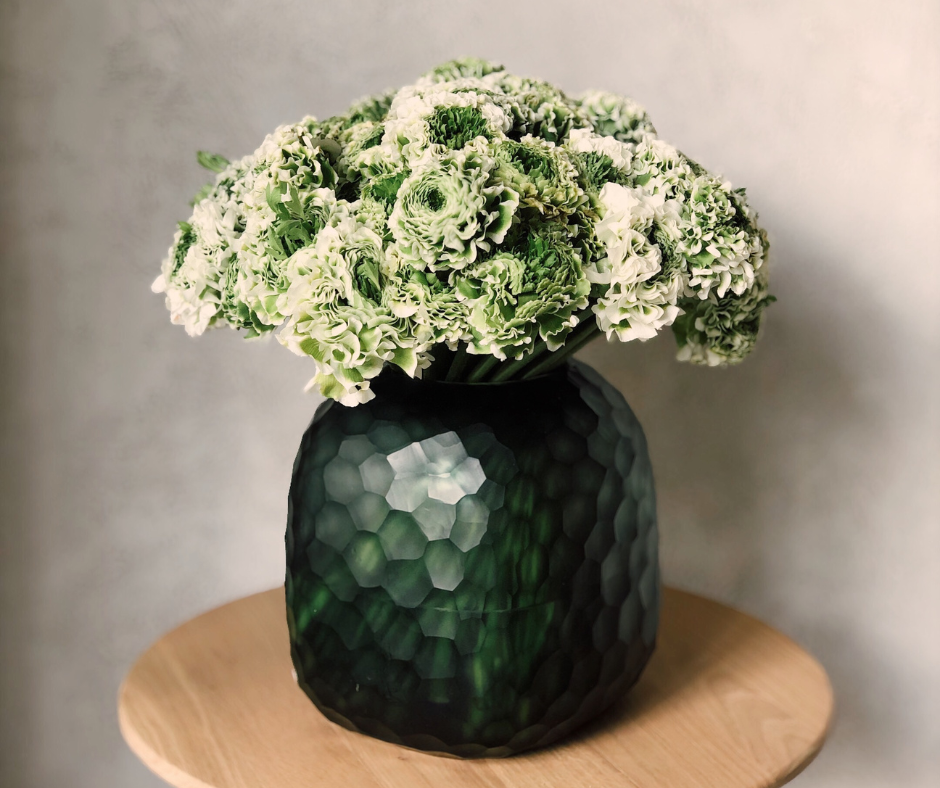

To ensure the longevity of floral arrangements, several tips can be followed. First, selecting the freshest flowers possible is key; look for firm petals and buds just beginning to open. Keeping the arrangement away from direct sunlight, drafts, and heat sources helps prevent premature wilting.
Using flower food, either commercial or homemade, can provide the necessary nutrients and antibacterial properties to prolong the life of the blooms. Regularly trimming the stems and changing the water enhances the flowers’ ability to stay hydrated.
For some flowers, specific techniques like searing the stem ends can preserve their vitality. Mindful placement of delicate flowers away from heavier ones in the arrangement can also prevent damage and promote longevity.
Floral Arranging Tips for Amateurs
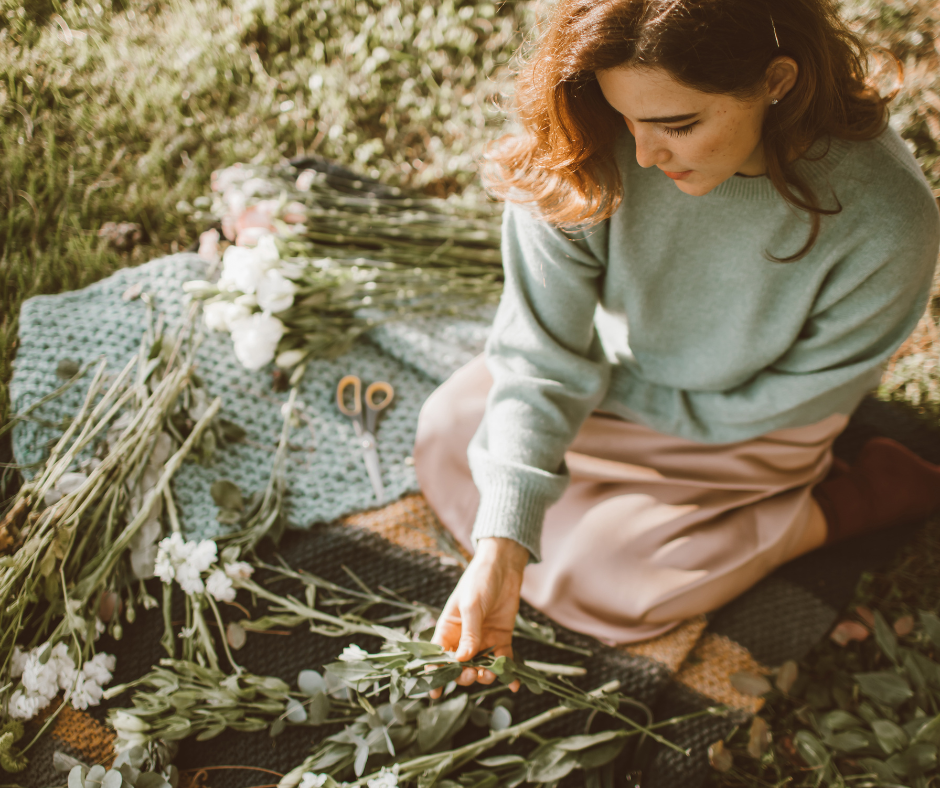

Amateurs in flower arranging often face a set of common challenges, but these can be easily overcome with practice and patience. One such challenge is choosing the right combination of flowers and foliage.
This can be addressed by understanding basic color theory and composition principles. Another frequent issue is the longevity of arrangements. Proper preparation and maintenance of flowers, such as cutting stems at an angle and changing water regularly, can significantly extend the life of an arrangement.
Overcoming the fear of making mistakes is also crucial; experimentation is a key part of learning, and every mistake is an opportunity for growth. Building confidence through practice and starting with simpler designs can help ease into more complex arrangements over time.
Resources for Further Learning
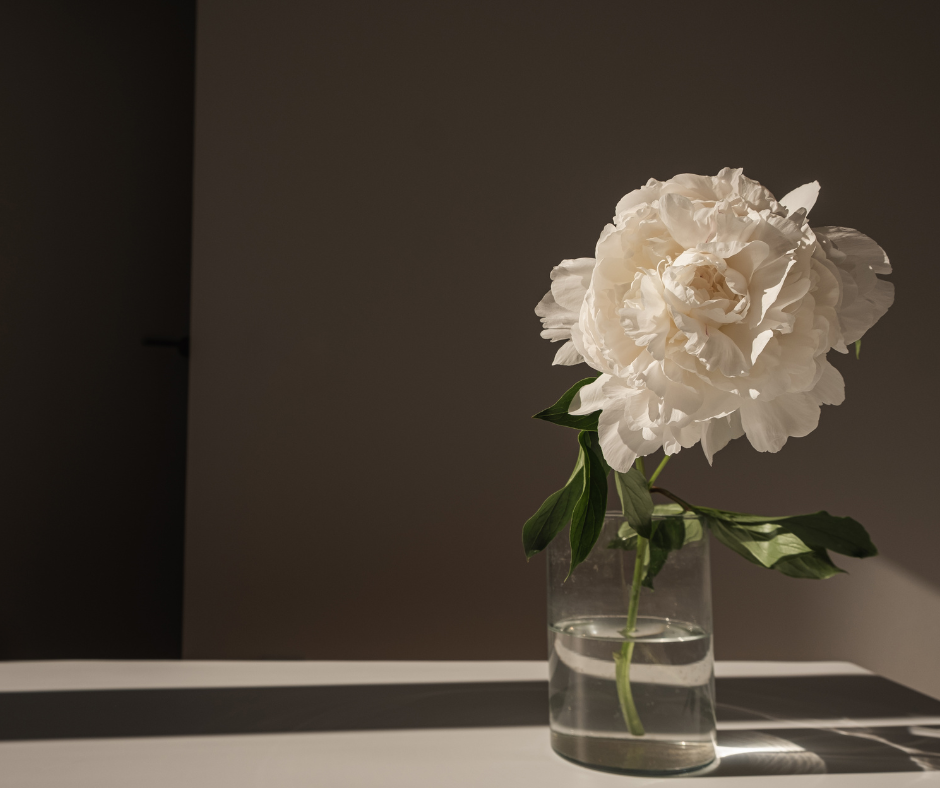

There is a wealth of resources available for amateurs looking to enhance their flower arranging skills. Workshops, either in local community centers or specialized flower schools, provide hands-on experience under the guidance of experienced florists. Online tutorials and video platforms like YouTube have become invaluable resources, offering free and accessible lessons that cover a wide range of styles and techniques. These tutorials allow learners to progress at their own pace and revisit complex steps as needed.
Books on floral design, covering everything from basic techniques to advanced concepts, are a great starting point. Many books also offer inspiration through beautifully photographed arrangements. We recommend that readers consider the following books as they begin their floral arranging journeys.
- Flower School: Mastering the Art of Floral Design by renowned floral designer and author Paula Pryke, who is known for her innovative approach to flower arranging.
- Jane Packer’s Flower Course by Jane Packer, who was a famous florist known for her modern floral designs. Jane Packer Flower School continues her legacy through various courses, including online offerings.
- Bringing Nature Home by Nicolette Owen, co-founder of Little Flower School in Brooklyn, who is recognized for her romantic and naturalistic floral designs. She collaborated with photographer Ngoc Minh Ngo on the book, which showcases floral arrangements inspired by nature.
- Floret Farm’s Cut Flower Garden by Erin Benzakein, who is a well-known figure in the floral farming and design community. Her book is popular among those interested in both growing and designing with flowers. Floret Farm’s website offers a range of resources and online workshops.
Joining Communities and Sharing Work
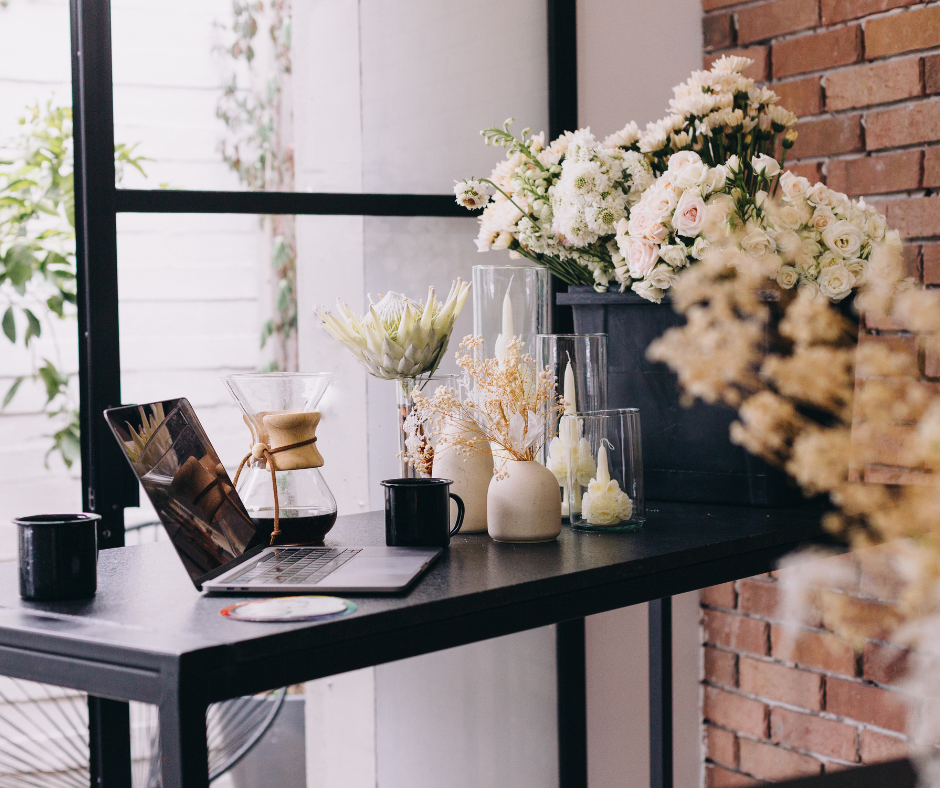

Joining a community of fellow flower arranging enthusiasts can be incredibly beneficial. It provides a platform for sharing work, receiving feedback, and gaining new ideas. Local gardening clubs or floral design groups often host meetings or arrange social events, which can be a great way to connect with others who share the same interest.
Online communities, such as forums, social media groups, or dedicated platforms for florists, also offer spaces to showcase arrangements, participate in challenges, and engage with a wider audience. Sharing work not only builds confidence but also opens the door to constructive criticism and new perspectives, which are essential for growth and development in any creative field.
Final Thoughts on the Art of Floral Arranging
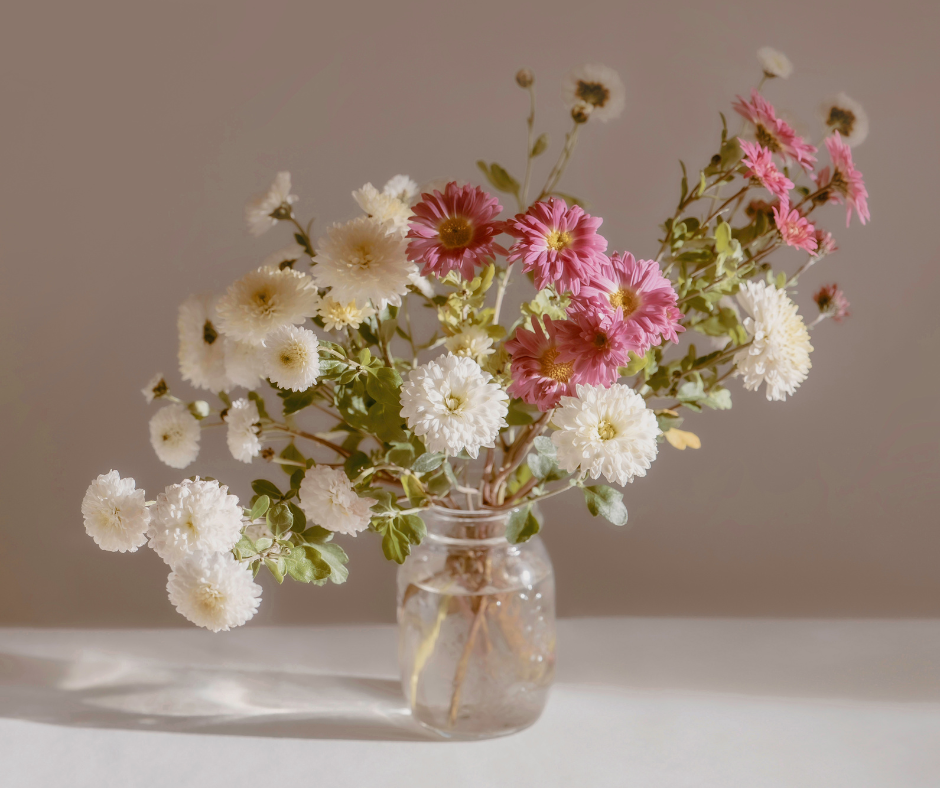

From the therapeutic act of working with nature to the satisfaction of creating something beautiful, this art form provides a unique blend of emotional and creative fulfillment. For amateurs and enthusiasts alike, each arrangement is an opportunity to explore and express oneself artistically, while also enjoying the calming and rejuvenating effects of being close to nature.
Ultimately, flower arranging is more than a hobby or skill—it is a form of personal and artistic expression that resonates deeply with individuals, allowing them to connect with the natural world and bring beauty into everyday life. We hope you will give it a try!








